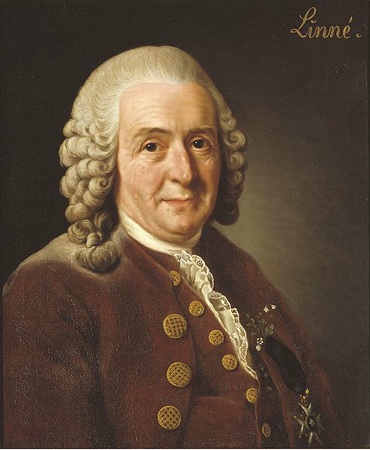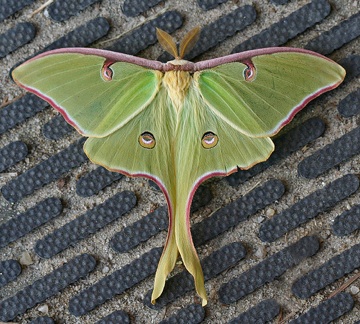The most ambitious science project of the 21st century

Linnaeus would be proud. Photo: Wikimedia Commons
The Explorers Club was concurrently a many as well as slightest suitable place for a International Institute for Species Exploration to reason a luncheon to speak about an unprecedented, NASA-like mission to discover as well as report 10 million class in 50 years or sooner.Most appropriate since Explorers Club members as well as IISE researchers do share a adore of scrutiny as well as discovery.
Least suitable since theres something about a Club thats determinedly as well as unapologetically old-school explorer. The largest tusks Ive ever seen support a sitting room fireplace, theres a enormous frigid bear (complete with audio-taped roar if we know which switch to trip) raring up upon his rear legs who greets we as we step onto a second floor, as well as a Clubs annual dinner is, it seems, a culinary joust between a exploring elite (with a prize being showing off rights about a many extreme animal intent a guest can eat).
Nothing about a members of a International Institute for Species Exploration seems to simulate this kind of path-finder ethic.
**
I was invited to attend a luncheon (just solid aged duck upon furious rice, served with a little veggiesno tarantulas, grubs, or eye balls) sponsored by IISE during a Explorers Club this week to speak about what might finish up being a defining systematic plan of a 21st century: a worldwide collaboration of researchers to rise a cybertaxonomy as a next judicious link in a chain of scholarship consecutive since a time of Linnaeus, a goal of which is to report as well as map all a class in a biosphere.
Botanists as well as biologists from a US as well as abroad gathered around a list with reporters to speak about a cybertaxonomy, a plan which is both unimaginably large and, we walked away thinking, entirely possible.
I felt! we was sitting during a powerhouse roundtable; a passion as well as conviction as well as commitment of a scientists in a room left me feeling similar to Id been present during a commencement of something unequivocally important, even if we was only concerned in a many tangential of ways.
**
Or was I?
One of a executive facilities of a cybertaxonomy plan is to engage amateursoften referred to in systematic circles as adult scientists in a pick up as well as dissemination of data. In a Wikipedia-esque model, a IISE as well as participating professional scientists will embrace as well as examination photos as well as alternative materials collected by citizens of a universe who see as well as have entrance to specimens in their village during ground level.

Photo: Lynette S.
These folks will, for example, take a photo as well as upload it to a interpretation pick up site; scientists upon a receiving finish will examination a facilities of a bird or plant or what have you, as well as will determine (a) either a specimen represents a formerly undiscovered species; (b) either a specimen confirms, contests, or adds any report to a existing store of believe about a known species; as well as (c) either a concomitant GPS interpretation tell researchers anything critical about class apportionment as well as habitat.
One such interpretation pick up site is a Encyclopedia of Life, an open-access, Creative Commons licensed, digital thesaurus of each vital thing upon a planet. Though EoL is probably a most appropriate knownand many comprehensivedata pick up site of this type, it is not a only one, as well as there have been additionally highly specialized sites, such as MushroomObserver.
And whilst Im absolutely desirous by a involvement of citizens during a internal level, Im additionally desirous by a degree of collaboration as well as cooperation between resear! chers as well as institutions which wish to flue their particular knowledge, experience, as well as interpretation in to a single, globally permitted database which can have absolute implications for each human being upon a planet. Unlike space exploration, this initiative is indeed collaborative, pronounced Dr. Johannes Vogel, a Keeper of Botany during Londons Natural History Museum. Whereas countries have been tripping over themselves to be leaders in a space race, a same degree of competitiveness is self-existent in a cybertaxonomy project. Furthermore, a digital platform allows collections to become indeed global, mostly resulting in a digital repatriation of specimens which have been physically hold by First World countries.
The greatest barrierof getting people together as well as getting them excitedhas been overcome, Vogel said, as Dr. Larry Page of a Florida Museum of Natural History added, Theres never been a more exciting time to be a biologist. This is indeed a age of discovery. Cyber infrastructure, Dr. Quentin Wheeler of a IISE concluded, makes an thought which was improbable just a couple of years ago all feasible today.
Want to get involved?
There have been several ways we can use adult science:
1. Learn more about a Encyclopedia of Life. EoL encourages adult scientists to share knowledge, photos, videos, as well as alternative material; sum about we do so have been accessible upon a website.
2. Check your internal botanical garden, natural story museum, or Nature Conservancy chapter to learn about adult scholarship projects. The Urban Tree Survey hosted by Londons Natural History Museum is just a single e.g. of a crowd-sourced project.
3. Share photos with MushroomObserver. As a sites name suggests, MushroomObservers purpose is to jot down observations about mushrooms, assistance people identify mushrooms they arent informed with, as well as enhance a village around a systematic scrutiny of mushrooms.
Community Conn! ection:< /h3>
Do we know about an interesting adult scholarship plan in your community? Email me to tell me about it: julie[at]matadornetwork[dot]com.
Comments